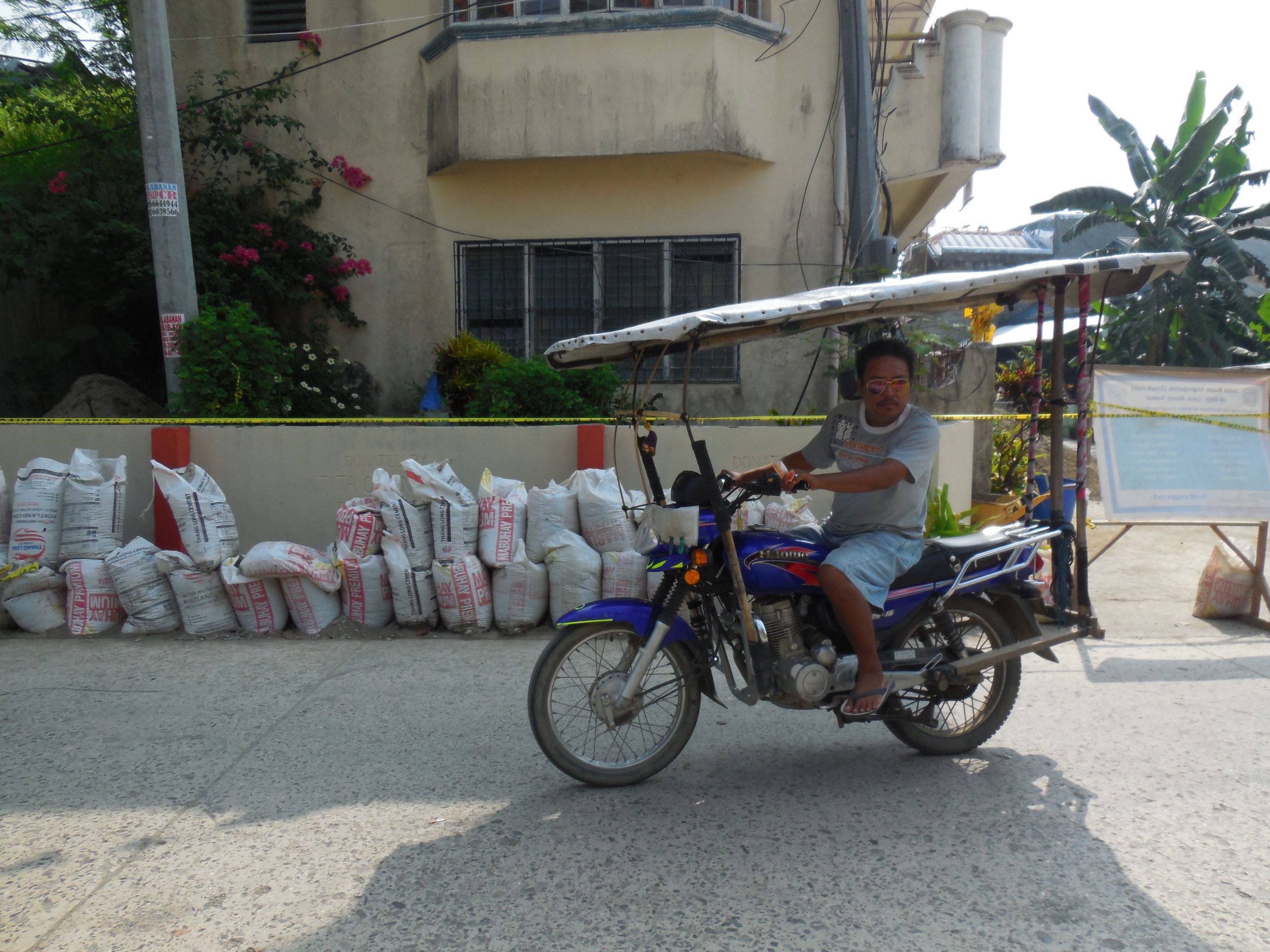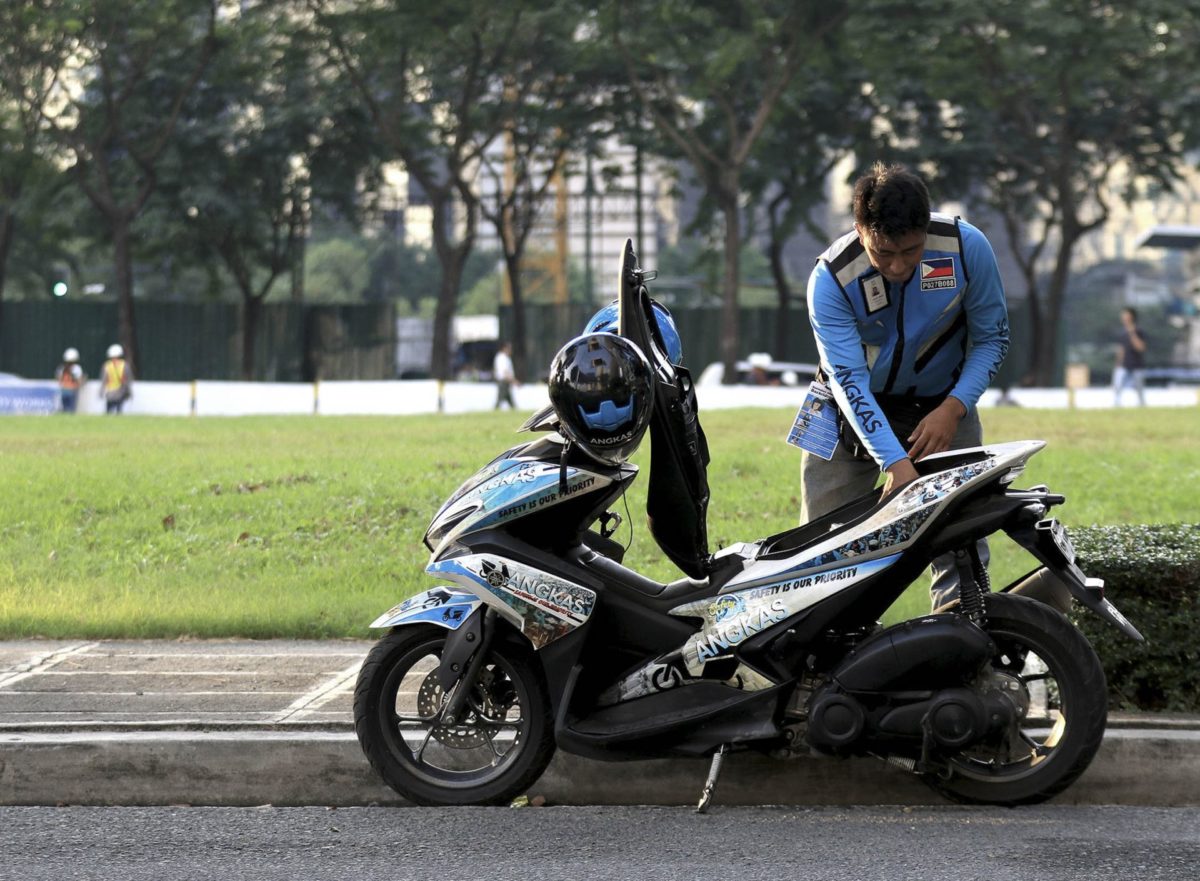This commentary is by Jofti Villena, Project Manager of the Bloomberg Initiative for Global Road Safety – Legal Development Programme (BIGRS-LDP). It is a fellowship of 12 professionals — lawyers, development workers, and health and public policy experts who advocate for the passage of evidence-based laws and policies on road safety. BIGRS-LDP is hosted by the Center for Integrative and Development Studies (CIDS), the think tank and policy research unit of the University of the Philippines.
Filipinos are known to be risk-takers – in their employment pursuits, choices in life and behavior. It is no different in their choice of transportation. But risks in this area have consequences not only on one’s personal health and safety, but also on the greater public.
The Department of Transportation (DOTr) recently formed a Technical Working Group (TWG) to assess the viability of motorcycle-for-hire or a motorcycle taxi as an option for public transportation. Various government agencies, stakeholders and road safety advocates sat in the TWG meetings to lend their expertise and provide the appropriate policy recommendations to address the issue at hand.
The Bloomberg Initiative for Global Road Safety (BIGRS) Legal Fellows believe the use of motorcycle taxi as an alternative public transportation is not currently supported by law. Unless RA 4136 or the Land Transportation and Traffic Code is amended or repealed by a law enacted by Congress, the use of motorcycle taxis as a mode of public transportation remains illegal.
Safety Concerns
There is an inherent vulnerability in a motorcycle as a mode of transportation as proven by established evidence of its safety risk. Though the current data are not attributable specifically to motorcycle taxis, they are reliable enough in estimating the safety risks to all motorcycle users in the Philippines. In fact, motorcyclists are among the most vulnerable road users (VRUs), along with pedestrians and cyclists because they constitute “more than half (54 percent) of all road traffic deaths”, according to the Global Status Report for Road Safety 2018 recently released by the World Health Organization (WHO).
Although the use of powered two- and three-wheelers (PTWs) in the Philippines is increasing, comprising 58 percent out of the total registered vehicles in 2016, this alone should not be cited as reason for the vehicle to be legalized as a public transport.
The growing use of motorcycles, combined with related risk factors (non-helmet use, speeding, drink and drug driving), is cause for concern. The Online National Electronic Injury Surveillance System (ONEISS) of the Department of Health showed a steady increase in road crash-related injury from motorcycles from 6,244 in 2010 to 28,694 in 2016.
Interviews with avid users of motorcycle taxis likeAngkas, reveal that speed and cost are the main reasons for the vehicle’s increasing popularity. Riders reach their destination on time because they are able to beat traffic. They are also convenient and much cheaper compared to regular taxis. But are riders aware of the risks?
Imagine a busy urban city like Manila, where most roads have no segregated motorcycle lanes. How will motorcycle taxis run on roads full of cars, and still be able to reach the targeted destination on time? Since they are smaller, they squeeze in between cars and buses and move faster than the rest. This is the very reason motorcyclists are much more vulnerable. Motorcycles can go fast and at times are hardly visible, making riders and passengers more exposed to injury from crashes with bigger vehicles on the road. The vulnerability of motorcyclists is compounded by the absence of an external shell protecting them, unlike the four-wheel vehicles.
For most Filipinos, safety is always associated with cost. Buying safer vehicles or riding a safer mode of transportation entails added cost, and with most of the population being in the low to middle-income, near-poor to poor, it is easy to see why cost trumps safety.
However, it is not always about convenience and cost especially if a life is at risk. When speed and convenience matter more than safety, there ought to be a voice emphasizing the latter.
To say that the emerging and popular motorcycle taxi works and has the potential to change the standard of safety is still premature at this point. Without solid and impartial evidence of its safety, the effectiveness of this option as a public transport remains uncertain. Where lives may be at risk, it is prudent to stay on the side of safety.
The Safe System Approach
Should motorcycle taxis become public transportation, the extraordinary due diligence required by law to ensure the protection of the riding public will be tested anew. The operators of these motorcycle taxis will bear the burden of proving that they can exercise this diligence required of common carriers, similar to other PUVs. However, the safety of passengers cannot be guaranteed by this utmost diligence alone, especially if other contributing factors to road crashes are not corrected.
This is where the government has to step in. The safety of motorcycle passengers requires that the entire road transportation system is well-oiled enough to work seamlessly to ensure the highest standards of safety for the proposed motorcycles-for-hire.
Aside from road discipline, the presence of exclusive motorcycle lanes (safer roads and mobility), anti-lock brake system in motorcycles (safer vehicles), mandatory helmet use with the right standards, strict enforcement of traffic rules such as speed limits (safer road users), and an emergency response system (post-crash response) are necessary and should all be in place.
Implementing motorcycle riders’ education and training in isolation of proven interventions mentioned above will not work as a safety net, as evidence shows its low effectiveness in addressing road safety, according to a 2006 WHO study.
Regardless of the motorcycle riders’ vast experience, the exposure to various risk factors and weak road environments are considerations to weigh before they engage in this undertaking, especially if they have inexperienced passengers behind them.
Proposals to Government
The demand for an efficient and faster mode of transportation cannot be met simply by allowing motorcycle taxis at the risk of public health and safety. With these critical issues against motorcycle taxis, the BIGRS Legal Fellows propose that the government continue with improvements in its enforcement of road safety rules and in promoting safe public transportation through:
Strict enforcement of Republic Act No. 10913 or the Anti-Distracted Driving Act, Republic Act No. 10586 or the Anti-Drunk and Drugged Driving Act of 2013, Republic Act No. 10054 or the Motorcycle Helmet Act of 2009, and Republic Act No. 10666 or the Children Safety on Motorcycles Act of 2015 and other traffic rules and regulations.
Development of safe, accessible, efficient and environmentally-sustainable mass transportation systems such as the Bus Rapid Transit System (BRT) and the PUV Modernization. Carrying more passengers at a time will certainly be more efficient and cause less pollution.
While the BIGRS Legal Fellows do not recommend the motorcycle taxi as a public transport, they are united with the Philippine government and other stakeholders in promoting motorcycle safety in general. They also recognize that although the present public transport system is far from perfect, the high capacity mass transport systems, if efficiently improved or restored, can be the real solution to all our traffic woes.
On the other hand, allowing the use of motorcycles-for-hire in the rural areas, known as “habal-habal” has a very different context which requires a different approach, a different set of rules and standards. While “habal-habal” are often the only means of transportation for people in remote areas, especially those without road networks, safety should still be of paramount importance in any deliberation on the matter.





